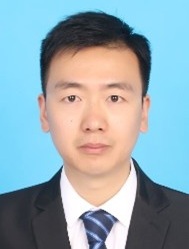Invited Speakers

Dawei Wang, Northwestern Polytechnical University, China
Wang Dawei, Research Fellow and Doctoral Supervisor at the School of Electronic Information, Northwestern Polytechnical University, recipient of the Shaanxi Province Outstanding Doctoral Thesis Award, obtained his PhD in Information and Communication Engineering from Xi'an Jiaotong University in 2018. His research encompasses wireless secure communications, satellite communications, unmanned aerial vehicle communications, and integrated communication-sensing systems. He has published nearly 100 academic papers in these fields, including over 40 in premier communications journals such as TWC, TCOM, and TVT. He holds more than 30 invention patents, both applied for and granted. He has led seven major research projects, including the National Natural Science Foundation of China (NSFC) General Programme, NSFC Young Scientist Programme, National Innovation Special Zone Project, and Shaanxi Provincial Key R&D Programme. As a key contributor, he has participated in national-level equipment pre-research, defence fundamental research, and NSFC projects concerning unmanned swarm systems and wireless reliable communications.
Speech Title: Optimization of Secure Communication and Sensing Systems (ISAC) Supported by Aerial Active Reflective Intelligent Surfaces
This report investigates optimization methods for secure communication and sensing systems (ISAC) assisted by aerial Active Reflective Intelligent Surfaces (ARIS). By introducing super-diagonal RIS technology and combining deep learning with optimization algorithms, the goal is to enhance the security, efficiency, and target localization accuracy of communication systems. First, the study proposes a high-precision target tracking and prediction method by jointly optimizing base station beamforming and RIS reflection coefficients, utilizing Extended Kalman Filtering (EKF) to improve localization accuracy. Secondly, to address non-convex issues, deep reinforcement learning (DDPG) and convex optimization techniques are employed to optimize UAV positioning and enhance information transmission security. Finally, simulation experiments validate the effectiveness of the proposed method in multi-user ISAC frameworks, demonstrating its potential for wide applications in smart cities, low-altitude economies, and other fields.

Chenglong Shao, Kyushu Institute of Technology, Japan
Chenglong Shao is an Assistant Professor in the Department of Computer Science and Networks at Kyushu Institute of Technology, Japan, a position he has held since 2023. He received his B.S. in Information and Communications Engineering from Xi'an Jiaotong University, China, in 2010, and his Ph.D. in Computer Science and Engineering from Korea University, South Korea, in 2019. He previously served as a Research Professor at Korea University in 2019, a JSPS International Research Fellow at Kyushu University from 2021 to 2023, and a Visiting Scholar at the University of California, Riverside, in 2024. His research interests span wireless networking, IoT-enabled mobile computing, wireless security, and networked embedded systems. He has authored over 30 first-author papers in leading international journals and conferences, including IEEE Transactions on Mobile Computing and IEEE/ACM Transactions on Networking. His work has been recognized with more than 10 international awards, such as the CANDAR 2022 Best Paper Award, the 25th Samsung Humantech Paper Award – Bronze Prize in 2019, and the 1st Place Transactions Award of 2018 Annual IEEE Consumer Electronics Society Chester W. Sall Memorial Awards in 2018. He serves as an editor for Computers, Materials & Continua (CMC) and the Journal of Information and Intelligence. He is an active member of the research community, contributing as a TPC member at over 20 international conferences and as a reviewer for more than 40 academic journals. He is a Senior Member of IEEE and ACM.
Speech Title: CoWiL: Combating Cross-Technology Interference in LoRaWAN
This talk explores LoRaWAN (Long-Range Wide Area Network), a leading wireless technology for IoT (Internet of Things) applications such as smart agriculture, asset tracking, and factory automation. To enable globally compatible products, LoRaWAN has been adapted to operate on the 2.4 GHz unlicensed band, replacing traditional region-specific sub-GHz bands (e.g., 868 MHz and 920 MHz). However, this shift increases vulnerability to cross-technology interference (CTI) from coexisting Wi-Fi networks using the same spectrum. This talk introduces CoWiL, a physical-layer solution that mitigates Wi-Fi-induced CTI without affecting Wi-Fi performance. Unlike existing methods that reduce Wi-Fi throughput or assume weak interference, CoWiL remains robust under varying CTI conditions. Implemented at the LoRa receiver, it recovers LoRa data by correlating demodulation results from the signal’s preamble and payload. A novel frequency bin mask, generated from the preamble, is applied during payload decoding. Experiments across real-world environments show that CoWiL reduces LoRa packet error rates by up to 96%, outperforming existing approaches.
To be added...

